A garage, in our reality, often serves its owner as both a car service station and a workshop. And sometimes - a cellar, a pantry, a warehouse and God knows what else. Therefore, the creation of a certain microclimate in it, and therefore the need for insulation, is not a whim of the car owner, but a vital necessity.
The main heat exchanger, of course, is the garage door, made of metal. In the summer they serve as a huge battery, actively heating the air inside the garage, and in the winter as a refrigerator. Warming them will radically improve the situation. And if with protection from summer heat everything is more or less clear - almost any insulation system is suitable here, then protection from cold will require more deliberate approaches. It's about choosing a heater.
Physics of heat transfer in a garage
Even if your garage is not heated in winter, then a car with a warmed-up engine put into it after a trip serves as a kind of heating device for some time. This means, first of all, on the gate, there are 2 air flows: warm from the inside, cold from the outside, which is why condensation forms on the inner wall of the garage door leaf. If the frost is large enough, then it turns into frost - the water freezes.
If you put insulation inside the garage door, then warm air will not flow to the canvas. That's right, but the insulation is different from the insulation. If you put mineral or any other wool, then it will inevitably be moistened in a garage, because the car itself is a source of excess moisture, especially in winter. At the same time, not only will it significantly lose its thermal characteristics, it will also provoke accelerated corrosion of the gate metal.
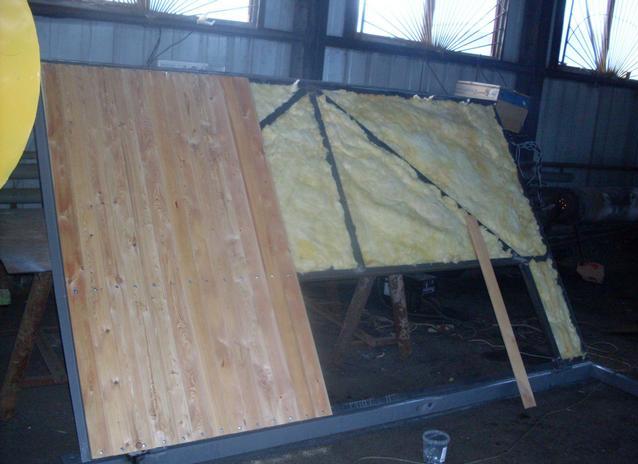
If you heat your garage during the winter, this process will only get worse.
This method of insulating garage doors can only be used if you do not operate the car in winter or this happens extremely rarely. And even then, before closing the gates, insulated with mineral wool, you need to let the car cool down enough. But the products in the cellar will not freeze and in the summer such insulation will save. But we will not consider this option of warming in this article because of its unsuitability, especially since there are more effective ways.
Simple ways to insulate garage doors from the inside
Since cotton wool is not quite suitable, you need to find effective insulation that does not absorb moisture. The simplest, but, unfortunately, not the most economical, will be the way of pasting garage doors with thick foamed polyethylene, such as used for soundproofing bodies, but thicker. It has an adhesive layer on one side. You just need to degrease the canvas, let it dry, and stick the material cut to size. Its thickness can be up to 35 mm.
There is a thick foamed polyethylene without an adhesive layer. You can glue it on glue of constant stickiness (this is used on scotch tape), which can be purchased via the Internet.
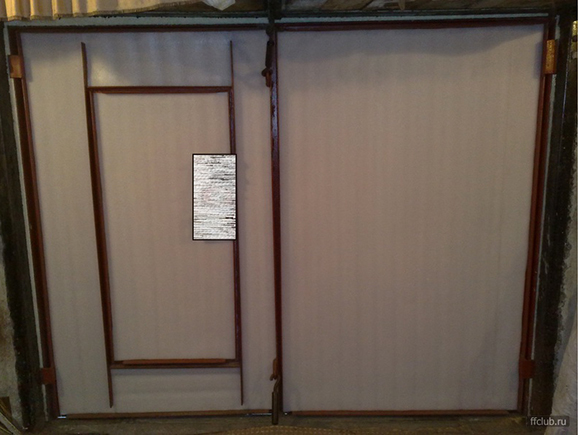
Or, use multiple layers of backing under a laminate of the same material. It is better to secure such a substrate using wooden battens and battens. And it is better to protect this whole cake from the inside with some sheet material, protecting it from mechanical damage: plywood, OSB, plastic panels, etc.

But this will not be enough if there are gaps around the gate, as in the photo. To eliminate them, you should use various seals or even metal linings with a seal if the gaps are very large.
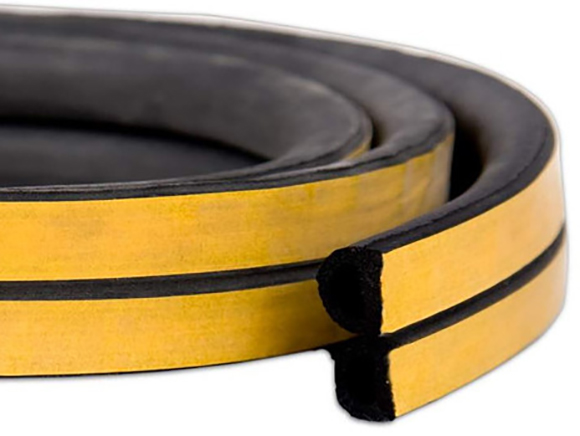
The second option for a simple solution to thermal insulation of the doorway will be the installation of a blackout curtain.

This solution is as simple as it is effective. The only inconvenience lies in the need to constantly raise or open such a curtain when entering and exiting the car.
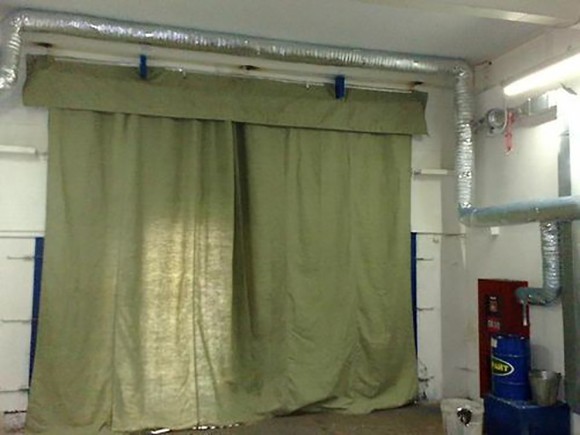
The main requirement: tight fit of the curtain to the walls and floor, especially from below, so that cold air, which is known to be below, is not blown in. The air gap between the door leaf and the curtain will serve as a gate insulation, and the air circulation will actively dry the formed condensate.
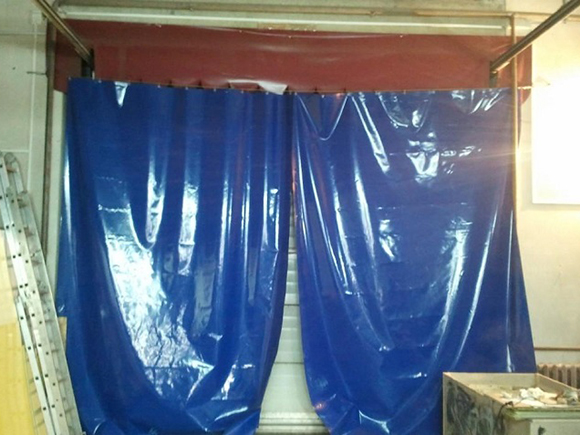
Curtain material can be any, but dense: tarpaulin, awning fabric, dense polyethylene. The most commonly used type of garage door insulation will be their insulation with expanded polystyrene.
How to insulate a garage door with foam
The choice of polystyrene foam for insulating garage doors from the inside with your own hands is simply explained:
- the relative cheapness of the material;
- ease of cutting;
- the effectiveness of insulation (one and a half times more effective than mineral wool);
- possibility of operation without additional protection.
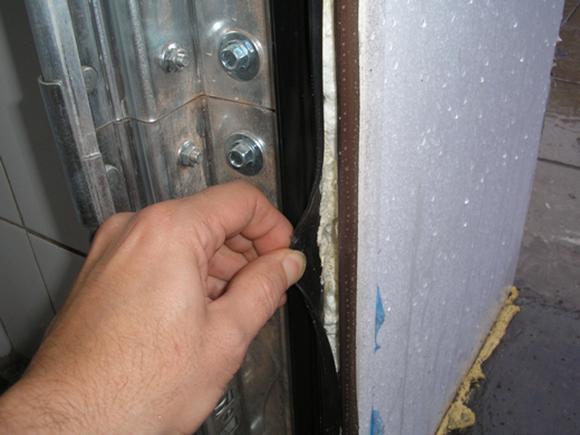
Polyfoam, unlike cotton wool, is absolutely hydrophobic, fungus does not start in it and it does not release small fiber particles into the air.
Let's consider the process of insulating garage doors with expanded polystyrene in more detail. There are 2 types of it:
- from expanded granules (otherwise called ball);
- extruded.
The second is more dense, but quite expensive and, unlike PSB-S, is quite flammable. It is only slightly "warmer" than usual white, so thickness plays a role in insulation. For garage doors, a layer of 50 mm will be sufficient.
Step-by-step instructions for insulating garage doors:
1 ... We clean the gate from dust, dirt and oil stains.
2. We fix wooden slats 50 mm thick. You can do this with self-tapping screws to the shelf of the corners, you can go through the outside through the door leaf, or you can glue it with polyurethane glue - a balloon one for polyurethane foam, applied with a foam gun, is also suitable.

3. With its help, we glue polystyrene, filling the cavities between the slats.


The glue should be applied to the expanded polystyrene sheets quite thickly, ideally in full.
4. The joints of the polystyrene sheets and the places of its abutment to the rails are also foamed with polyurethane foam (you can use the same foam glue). After polymerization, remove excess foam with a sharp knife flush with the foam.
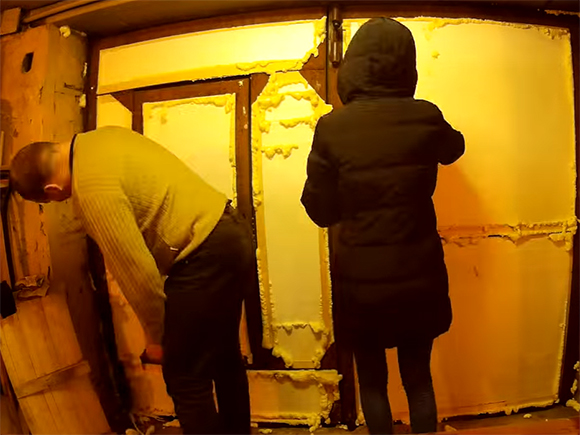
5. We cover the entire surface of the gate with foil-coated penoizol (it is better to take it with aluminum foil, and not spraying) with a shiny layer inside the garage. We use self-tapping screws with a cone-shaped head, deepening them into the rail.
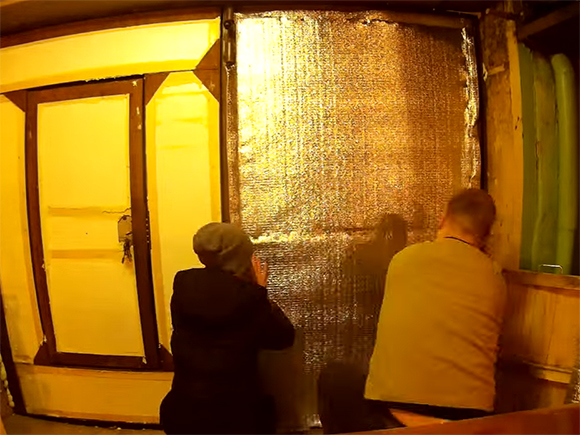
6. We close the insulation with sheets of plywood or OSB, screwing them to the frame slats.

7. We glue the sealant in the quarters of the openings, foaming the cracks around the box.
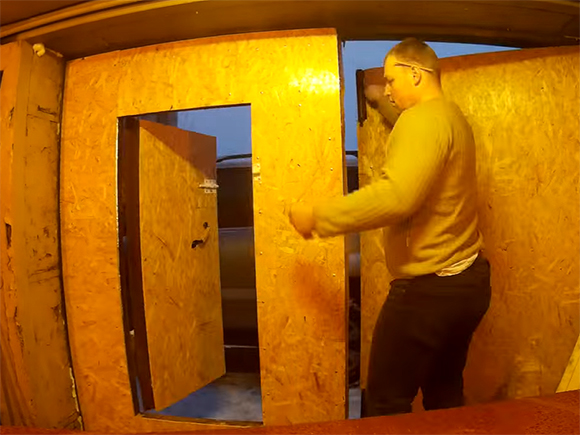
It is advisable to paint over the inner lining or open it with varnish.
do-it-yourself insulation of garage doors from the inside with polyurethane foam
And yet the best way to insulate garage doors from the inside is to spray them with polyurethane foam. Firstly, it is by far the most effective insulation: it is one and a half times better than expanded polystyrene and three times better than mineral wool, and secondly, having excellent adhesion, it fills all the cavities of the garage doors without leaving the slightest voids.
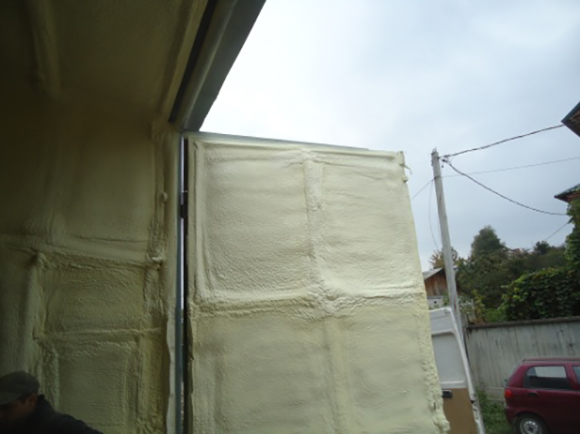
Ideally, a high density polyurethane foam should be used and applied with a special apparatus. Only it is unlikely that you have one in the corner of the garage, and hiring a team with the necessary equipment is quite expensive, and in fact the raw materials themselves are not very cheap. But there are 2 options in which you can do the work yourself:
1. One of them is described in our self-made SIP panels:
Polyurethane foam in cylinders is the same polyurethane foam, though of low density, but it will do its job no worse than sprayed through high pressure installations. A spray gun for this method of application can be used with an old one, but with a large nozzle, and a compressor will certainly be found, if not with you, then in one of the neighboring garages. You need to apply the foam all the way, so that the result is a layer of 30 mm. You can do this in several steps.
2. The second one is somewhat more expensive, but less troublesome. For it, you will need to purchase a Foam Kit for spraying polyurethane foam, consisting of two containers with components A and B (polyol and isocyanate), when mixed forming polyurethane foam, a hose and a spray gun.
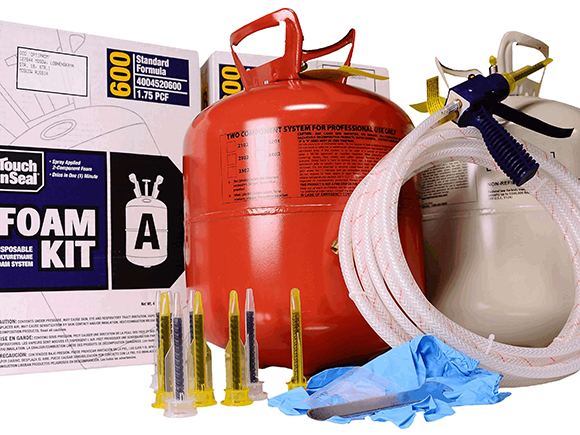
These kits come in different capacities, with a fairly accurately calculated foam output by volume. It is not so difficult to calculate it.
There are kits from other companies, and the spraying process itself will become clear to you after watching a demo video. After polymerization, the foam can be painted or covered with an inner lining in a convenient way.
Dear readers, if you have any questions, ask them using the form below. We will be glad to communicate with you;)



